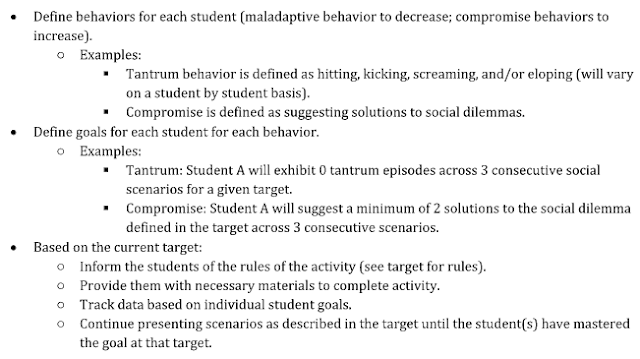Today's blog was written by our very own Clinical Director, Dr. Barbara Kaminski, Ph.D, BCBA-D. If you enjoy today's blog and are in the Northern Virginia area, sign up for our free Autism Awareness Workshop, Saturday Dec 17 from 12-2pm for more insight into how parents of children on the Autism spectrum navigate the world:http://www.signupgenius.com/go/409094aa8ab2ea4fb6-autism
So, I have had
the idea for this blog bouncing around in my head for months. To be honest, I
was struggling with how to write about this without sounding judgmental. That’s
especially important because what I wanted to write about was, well, not being
judgmental. It all started when I heard a story about the reaction of an onlooker
when a child with autism had a meltdown in a public place. The story is
paraphrased below, but you can read it in its entirety at the From the Bowels of Motherhood blog site (http://fromthebowelsofmotherhood.blogspot.com/2014/03/the-good-bad-and-unknown.html?m=1).*
The scene: a
busy fast food restaurant at lunch time. A mom with three young children, the
middle child a 2-year old diagnosed with autism. Despite a long wait for the
food, lunch was going well until there was an unexpected change. A juice box
that was shaped differently than the ones at home. A meltdown ensues. Mom gathers
things together to leave. On one arm, baby in car carrier, trying to also
manage meltdown child. The other hand carrying a food tray full of trash. An older
woman approaches from a nearby table. Glimmer of hope. Surely she will offer to
take the precariously carried tray. Instead of helping, she simply comments, “Wow, you have a pretty unhappy little boy on
your hands there. He must need a nap.”
Every child has
their meltdown times. For parents of typically developing kids, there are some
basic things that you can do. Avoid running errands right before nap time. Make
sure the kids have eaten before going to the grocery store. Knowing those
things help, but things will never be perfect. As a parent, I have my own
stories of meltdowns in public places.
But for kids
with special needs, the things that trigger meltdowns are not always so
avoidable. Or predictable. In the story above, the meltdown happened because
the juice box served with the kid’s meal was a slightly different size/shape
than the one served at home.
ABA
practitioners who work with kids with special and behavioral needs often work
on skills that in cognitive behavioral therapy are called “theory of mind”
skills. A critical “theory of mind” skill is perspective taking, which refers
to the ability to relate to others, make reasonable inferences about someone’s
thoughts, feelings, and motivations, and make predictions about their needs and
reactions. An onlooker’s reaction can relate back to this skill. It’s not that
many people don’t have theory of mind skills, it is that they don’t have the
experience and frame of reference to take the perspective of a parent of a
child with special needs. Most people have experience with kids melting down
because they are tired or hungry or “spoiled brats.” If you have never had
experience with a kid who melts down because of a “wrong” shaped juice box, it
is very difficult to include that in your perspective taking. If your
experience is that kids melt down when they are tired, then that is the most
likely way you will interpret the situation in front of you.
Perspective
taking can help an onlooker to be sensitive to the fact that parents of
children with autism may be experiencing additional stress. That said, in a
situation like the one described, an onlooker doesn’t necessarily need to take
the perspective of a parent of a child with autism, just the perspective of
another person in a challenging situation.
So, what can be
done in these kinds of situations?
If you are the
parent:
· -Try
to keep your cool.
· - Remember,
people may have difficulty taking your perspective and so they may not respond
to the situation in the most helpful way.
· - It
won’t always be possible, of course, but when it is, educate.
· -Be
sure to educate both those who respond poorly and those you step up and are
helpful. -Just because someone is kind, doesn’t mean that they wouldn’t benefit
from learning more.
If you are the
onlooker:
· - Don’t
judge
· - Offer
to help as appropriate. Some parents may not appreciate the offer. Because it
is a time of high stress, the parent may even respond rudely. That’s okay. You
were the better person for offering.
· - Most
parents, regardless of whether the child has special needs, will appreciate the
offer.
Bottom line is:
offer to carry the tray.
*excerpt shared
with permission of the original author











